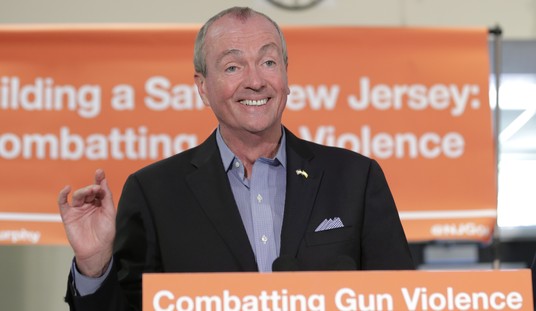Has a war begun brewing between the Federal Reserve and outgoing Treasury Secretary Steve Mnuchin? In the waning days of the Trump administration, Mnuchin wants to clean up the accounts used to provide non-appropriated COVID-19 relief to businesses. Yesterday, Mnuchin announced that certain Fed-related programs could maintain their funds, but that several programs would be closed out — and directed the Fed to return the money.
Not so fast, the Fed responded in a rare public rebuke. They see risks developing across the board and want to maintain those relief facilities into the new year. And they may not have to buckle under, either:
In a letter to Fed Chair Jerome H. Powell, Mnuchin not only said that several of the programs would wind down at the end of the year, but he also requested that unspent money allocated to the Fed under the first stimulus effort, the Cares Act, be reallocated by Congress. However, the Treasury Department does not have the sole authority to reallocate the funds and would need to secure Fed agreement.
The letter triggered a rare public statement from the Fed on Thursday evening.
“The Federal Reserve would prefer that the full suite of emergency facilities established during the coronavirus pandemic continue to serve their important role as a backstop for our still-strained and vulnerable economy,” the central bank said.
The Treasury Department’s move would end most of the Fed’s emergency lending facilities, as well as two highly-scrutinized programs — the Main Street lending program and the municipal liquidity facility — which issue loans to struggling businesses and local governments. Mnuchin also requested a 90-day extension for a few of the programs that operate through the markets.
CNBC points out that the programs defended by the Fed didn’t get a lot of use anyway, and what use they did get was controversial:
The programs were set to expire at the end of the year. They were instituted in early March to open markets that had frozen during a panic-selling frenzy as fear over the pandemic grew.
However, they were sparsely used for the most part and the subject of some criticism, particularly the Main Street facility.
“While portions of economy are still severely impacted and in need of additional support, financial conditions have responded and the use of these facilities has been limited,” Mnuchin said in a letter to Fed Chair Jerome Powell.
Just how much has the Fed used the Main Street facility? Less than ten percent of capacity even after seven months:
The programs together didn’t come close to their capacity of more than $2 trillion.
In particular, the Main Street program, geared at businesses with fewer than 15,000 employees, went through several changes, none of which created significant interest from either borrowers or lenders. Through early November, Main Street issued just shy of $4 billion in loans, compared to its $600 billion capacity.
“The Main Street Lending program, which was meant to be the low-interest loans to help people stay afloat, has been an absolute failure. I don’t know of a single hotelier in the entire United States that received a Main Street lending loan,” Chip Rogers, chief executive of the American Hotel & Lodging Association, said Thursday on CNBC’s “Power Lunch.”
If that’s the case, then why does the Fed want to keep the programs in place? The most obvious answer is that no one would want to give up a $600 billion credit line. The only slightly-less-obvious answer is that the Fed sees these funds as potential for massaging the money flow and business support absent any action from Congress. It’s the pandemic equivalent of Quantitative Easing, which back in the day used to be called printing money. If the government won’t or can’t act, the Fed wants to husband whatever resources it has for spot interventions and supports. Mnuchin’s demand to have those resources returned means the Fed can’t use them to prop up the economy in the absence of congressional action to extend relief programs.
The better approach would be for Congress to extend its appropriated programs and to deliver more payroll support in the wake of renewed lockdowns. The prospects for new talks brightened yesterday, although perhaps only briefly:
Senate Majority Leader Mitch McConnell, R-Ky., has agreed to resume negotiations with Democrats over a potential new Covid-19 relief bill as cases continue to surge around the country, Sen. Chuck Schumer, D-N.Y., said Thursday.
“Last night, they’ve agreed to sit down and the staffs are going to sit down today or tomorrow to try to begin to see if we can get a real good Covid relief bill,” the minority leader said during a news conference in New York. “So there’s been a little bit of a breakthrough in that McConnell’s folks are finally sitting down and talking to us.”
Well, maybe:
Republican and Democratic congressional aides, however, told NBC News that Schumer might have oversold the development, as both sides begin negotiations on government funding to stave off a government shutdown on Dec. 11.
Schumer’s office didn’t immediately respond to a request for clarification. McConnell’s office did not immediately return a request for comment.
Congress kicked both of these issues to the lame duck session, apparently in the belief that the election would clarify their mandate. Instead, it’s as muddled as ever on both the omnibus and the Phase 4 relief plan. Nancy Pelosi isn’t budging off her demands from the late summer on the latter, and neither is Mitch McConnell. It might be easier to get past the omnibus bill, except there is now some concern that Donald Trump won’t sign it — so they’ll need two-thirds in both chambers just in case, which complicates the negotiations.
Maybe Mnuchin should let the Fed keep the money. They’re doing better with it than Congress, even if that’s a low bar.








